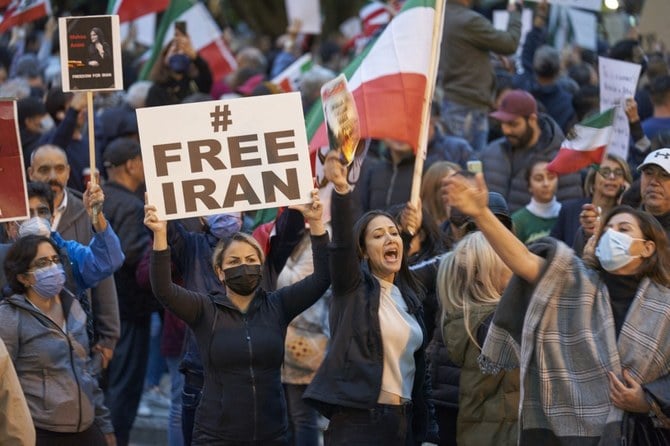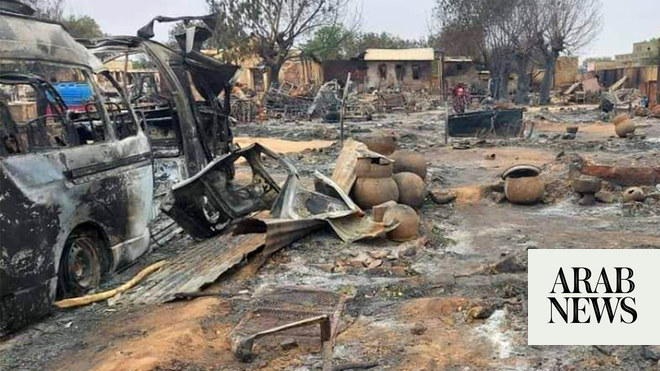
Iranian politicians have repeatedly insisted that Iran has not started a war or invaded any other country in centuries. They claim that the last war waged by Iran was in the 18th century, when it invaded India under Nader Shah. These statements are made to highlight the claim that Iran seeks peace and is not an aggressor. Responding to comments by US Secretary of State Mike Pompeo about Iran’s belligerence, Foreign Minister Mohammed Javad Zarif in September tweeted that Iran is a “millennia-old nation that hasn’t attacked anyone for centuries.” Similarly, Zarif claimed in a 2016 Twitter post that Iran hasn’t attacked any other country in 250 years.
This article aims to decisively refute these false claims in order to expose the Iranian regime’s typically underhanded and deliberate play on words. I will focus on the theocratic regime that took power after the popular 1979 revolution that toppled the shah. Almost immediately after the revolution, the Iran-Iraq War broke out, lasting for eight years from 1980 to 1988. Although Iran claims that the Iraqi regime was responsible for starting the conflict, realities suggest that this war was planned before the revolution and was instigated by the Iranian side. There are undisputed historical incidents proving this.
The war with Iraq served many objectives for the theocratic regime in Tehran, in particular to “export the Iranian revolution” and its hard-line ideology to neighboring countries, as well as to heighten Iranian nationalism and impede the growth of any domestic resistance — opposition had begun to grow soon after the clerics took power, as they failed to fulfill the promises they had made to the Iranian people. For the then-Supreme Leader and founder of the “Islamic Republic” Ruhollah Khomeini, this war was a perfect opportunity, which he was keen not to waste despite regional attempts to end the conflict very early on.
Throughout the war, Khomeini continued repeating the slogan that “the road to Jerusalem passes through Karbala” — a clear indication that the Iranian regime was attempting to occupy Iraq and Jordan in order to reach the occupied Palestinian territories and annex those as well. Eight long years after the bloody conflict began, Khomeini, having failed to achieve his goal, was forced to sign an agreement to bring the war to an end. He said that acceding to this agreement was akin to “drinking the cup of poison.” This war of attrition led Iranian politicians to realize that it would be impossible for them to export the Iranian revolution via the army or the Islamic Revolutionary Guard Corps (IRGC) alone.
All these militias across the region are fully controlled by and take their orders from Iran, receiving financial, military and logistical support.
Dr. Mohammed Al-Sulami
As a result, the leaders looked for alternative strategies to achieve their expansionist project in the Arab region. One possibility emerged with a theory devised by Mohammed-Javad Larijani entitled, “The Theory of Umm Al-Qura.” This suggested that the city of Qom be designated as the global Islamic capital and Tehran as the political capital of the Islamic world. Unfortunately for the regime, this theory was stillborn in terms of practice and implementation: There was and is no way to convince 1.5 billion Muslims around the world to accept Qom as an alternative to the sacred Islamic capital of Makkah. Without being able to achieve this ambitious objective, the aim of making Tehran the political capital of the Islamic world could only be a daydream.
The Iranian leadership wasted no time in coming up with a new strategy: Shiite geopolitics. This depended on exploiting Shiite minorities in the Arab world to help implement the regime’s expansionist agenda; with this strategy achieving significant success in Lebanon via Hezbollah. Tehran worked to recreate the Lebanese Hezbollah model in several other countries, including Hezbollah Al-Hejaz, the Wefaq militias and others in Bahrain, and some of the more easily influenced clans in Yemen, notably the Houthis. Iran’s regime enlisted the services of Badr Al-Din Al-Houthi and then his two sons Hussein and Abdel-Malik. After the 2003 US invasion of Iraq, Iran worked to establish several militias there. It also formed militias in Pakistan, Afghanistan and even Nigeria.
The foremost mission of these militias is to implement the Iranian expansionist project in the Arab region. Through the use of these proxy militias, Iran kills two birds with one stone. As well as providing the regime with a useful pressure card, these sectarian militias destabilize targeted countries, weaken their social fabric and play on sectarian fault lines. These militias also provide Iran’s regime with “plausible deniability,” enabling it to avoid direct blame for their nefarious activities. This strategy is also less costly than relying on the Iranian army. More importantly, from the regime’s perspective, it avoids risking Iranian lives as it did during the Iran-Iraq War. Instead it uses gullible Arabs to kill fellow Arabs and serve the Iranian expansionist project under different guises.
All these conclusively proven facts affirm without a doubt that the Iranian regime’s claims, promoted by its officials and affiliated media, that it has not invaded any nation or initiated aggression in centuries are false and a distortion of realities on the ground. All these militias across the region are fully controlled by and take their orders from Iran, receiving financial, military and logistical support, as well as training from the IRGC, as part of the regime’s larger plan for regional expansionism.
Some years ago, Hassan Nasrallah, the secretary-general of Hezbollah, admitted that the movement is a part of the Islamic Republic of Iran under the Guardianship of the Islamic Jurist, i.e., the current Supreme Leader Ali Khamenei. Recently, Nasrallah admitted that the movement’s edibles, salaries and weapons all come from Iran. Furthermore, a senior commander within the IRGC, Nasser Shabani, admitted that the Iranian regime had asked the Houthis to target two Saudi ships in the Arabian Sea, which they did. Similarly, Watheq Al-Battat, who heads the so-called Hezbollah in Iraq, said recently that, if a war breaks out between Iraq and Iran, “I will be on the side of Iran.”
One of the Iranian regime’s senior regional agents is Iraq’s Hadi Al-Amiri, a close associate of Qassem Soleimani and who now heads Iraq’s Badr Organization. Al-Amiri led an IRGC infantry regiment during the Iran-Iraq War and subsequently became a senior official in the IRGC’s intelligence department, taking part in its Badr operations in 1985. Al-Amiri also took over managing the Iranian regime’s movements inside Iraq under Soleimani’s guidance and, until recently, occupied a senior position within the Popular Mobilization Units, the Iraqi edition of the IRGC.
Bearing in mind all of the aforementioned facts and given the Iranian regime’s more overt involvement in ongoing regional wars, such as in Syria and Yemen, can the Iranian regime seriously claim that it has never invaded any country or initiated aggression in centuries? The answer to this is up to the honorable readers.
Dr. Mohammed Al-Sulami is Head of the International Institute for Iranian Studies (Rasanah). Twitter: @mohalsulami
Disclaimer: Views expressed by writers in this section are their own and do not necessarily reflect Arab News" point-of-view












